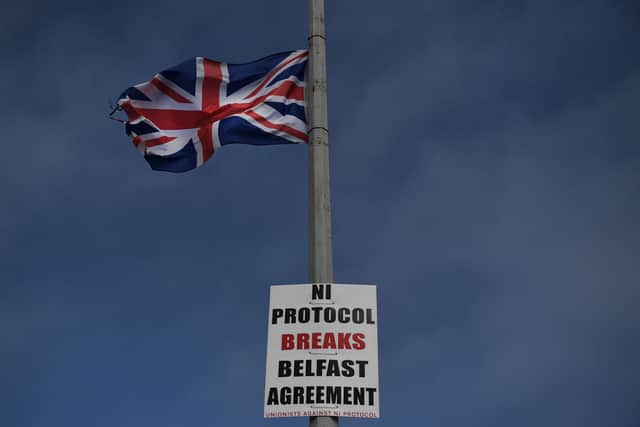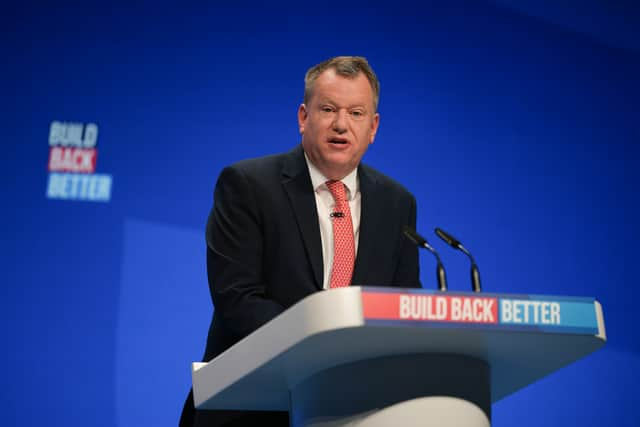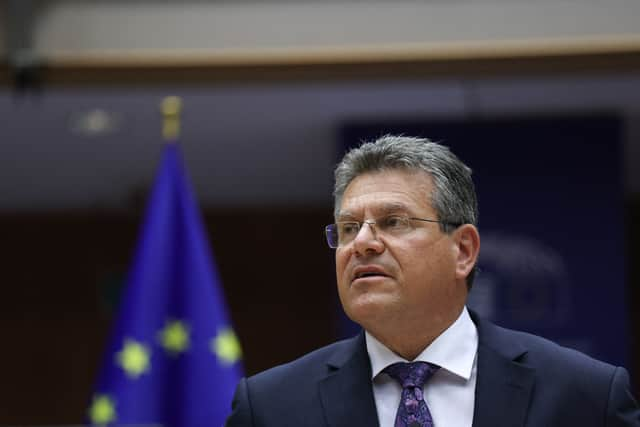What is the Northern Ireland Protocol? Brexit agreement explained - and why EU and UK are in talks over it
This article contains affiliate links. We may earn a small commission on items purchased through this article, but that does not affect our editorial judgement.
and live on Freeview channel 276
The Northern Ireland Protocol has been a major bone of contention between the UK and EU since Brexit officially took place on 31 December 2020.
The UK has argued it is too stringent and has sought to make alterations to the legal text.
Advertisement
Hide AdAdvertisement
Hide AdOn the other hand, the EU has rebuffed attempts to change it, leading to a stand-off that has persisted throughout the summer.
But on Wednesday 13 October 2021, the European Commission Vice-President Maros Šefčovič outlined a range of “very far-reaching” proposals aimed at resolving the political stand-off.
These followed the UK’s own plans for an entirely new protocol the previous day.
So what exactly is the current Northern Ireland Protocol, why is it a sticking point in the UK-EU relationship - and how could it change?
Advertisement
Hide AdAdvertisement
Hide AdWe want to hear from you: let us know what you think about this story and be part of the debate in our comments section below


What is the Protocol?
It was how the EU and the UK overcame the main sticking point in the Brexit withdrawal talks: the Irish border.
To avoid disrupting cross-border trade and a return of checkpoints along the politically sensitive frontier, they essentially agreed to move new regulatory and customs processes to the Irish Sea.
That means the checks are now focused on trade between Great Britain and Northern Ireland, with goods continuing to move freely within the island of Ireland.
Advertisement
Hide AdAdvertisement
Hide AdTrade between Northern Ireland and Great Britain is largely unaffected by the Protocol.
The red tape applies on movement in the other direction. Since December 31, a range of regulatory animal and plant safety checks have been in operation, including physical inspections for a proportion of arriving freight at new port facilities.
Customs declarations are also required for incoming commercial goods.
How does the Protocol work?
Northern Ireland remains in the EU single market for goods. The region also applies EU customs rules at its ports, even though it is still part of the UK customs territory.
Advertisement
Hide AdAdvertisement
Hide AdThe protocol also sees Northern Ireland follow certain EU rules on state aid and VAT on goods.


How could the Protocol change?
The biggest change under the plans the UK has published is the removal of the European Court of Justice (ECJ) as being the final arbiter of issues arising from the Protocol.
"The problem with the Protocol at the moment is that EU law, with the ECJ as the enforcer of it, is applied in Northern Ireland without any sort of democratic process," the UK’s Brexit Minister Lord Frost told Sky News.
"So that, I think, has to change if we're to find governance arrangements that people can live with."
Advertisement
Hide AdAdvertisement
Hide AdThe UK hopes to replace the ECJ with an independent arbitration process.
The EU’s plans include proposals to significantly reduce the number of checks required on goods being shipped into Northern Ireland from Great Britain - something the UK has also sought to change.
According to Irish broadcaster RTÉ, there are four key areas in the EU proposals: agri-food goods, customs, movement of medicines and engagement with Northern Irish politicians, business leaders and civil society.
The two sides will now head into another round of talks over the coming weeks to see if they can agree on changes to the Protocol.
Advertisement
Hide AdAdvertisement
Hide AdShould these talks fail, there is a risk a trade war could break out between the UK and EU.


What happened during the previous UK-EU negotiations on the Protocol?
The UK held talks with the EU on the implementation of the Northern Ireland Protocol over the summer.
They were aimed at ending the deadlock over the implementation of the Brexit Withdrawal Agreement in Northern Ireland but ended without a breakthrough.
At the time, Mr Sefcovic said the Bloc’s patience was “wearing very, very thin” and warned any further backtracking from the UK would be met with a resolute response
Advertisement
Hide AdAdvertisement
Hide AdEver since then, Brexit minister Lord Frost has refused to rule out the UK triggering Article 16 of the Northern Ireland Protocol, but said there were a “range of options” under consideration.
What is Article 16?
Article 16 of the Northern Ireland Protocol states the following: “1. If the application of this Protocol leads to serious economic, societal or environmental difficulties that are liable to persist, or to diversion of trade, the Union or the United Kingdom may unilaterally take appropriate safeguard measures.
"Such safeguard measures shall be restricted with regard to their scope and duration to what is strictly necessary in order to remedy the situation. Priority shall be given to such measures as will least disturb the functioning of this Protocol.
"2. If a safeguard measure taken by the Union or the United Kingdom, as the case may be, in accordance with paragraph 1 creates an imbalance between the rights and obligations under this Protocol, the Union or the United Kingdom, as the case may be, may take such proportionate rebalancing measures as are strictly necessary to remedy the imbalance.
Advertisement
Hide AdAdvertisement
Hide Ad“Priority shall be given to such measures as will least disturb the functioning of this Protocol.
"3. Safeguard and rebalancing measures taken in accordance with paragraphs 1 and 2 shall be governed by the procedures set out in Annex 7 to this Protocol.”
How have unionists reacted to the Protocol?
Demonstrations against the Protocol by Loyalists have taken place throughout the summer.
The pro-Union community in Northern Ireland oppose the Protocol and the checks on goods arriving into ports because it has essentially created a border between the region and the rest of the UK.
A message from the editor:
Advertisement
Hide AdAdvertisement
Hide AdThank you for reading. NationalWorld is a new national news brand, produced by a team of journalists, editors, video producers and designers who live and work across the UK. Find out more about who’s who in the team, and our editorial values. We want to start a community among our readers, so please follow us on Facebook, Twitter and Instagram, and keep the conversation going. You can also sign up to our email newsletters and get a curated selection of our best reads to your inbox every day.